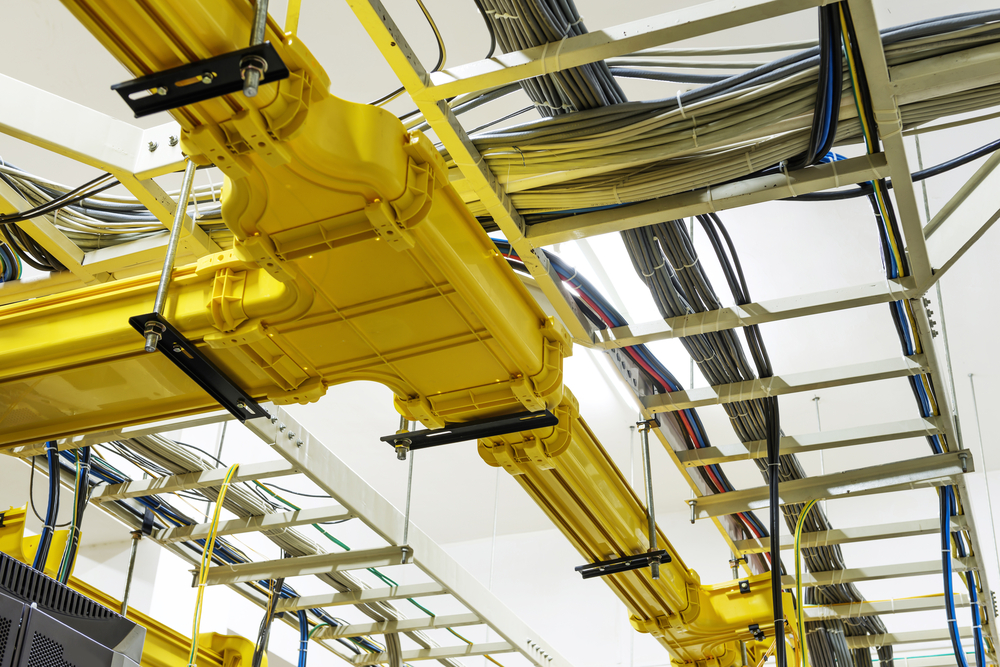You typically have two choices when it comes to the power distribution system for your data center. You can either run your cabling under a raised floor or suspend it from the ceiling. Both methods have their own advantages and drawbacks.
Overhead Busway
Overhead busways provide a convenient, energy-efficient option. They run in pairs (for redundancy) above the IT equipment cabinets down the length of the row. Receptacles are housed in modular boxes that attach to the busway at intervals wherever needed.
Overhead busways do not require a cable ladder/tray or a raised floor to distribute power. Since the busway is readily accessible, receptacle installations are simple. Monitoring is available at either the busway or receptacle level. While they require a larger initial investment, moves/add/changes of receptacles in overhead busways may cost less.
There are drawbacks to overhead busways as well. For example, material costs are higher and total deployment costs more than power whips. Overhead busways require adequate ceiling space and must be installed by a qualified electrician. Because high voltages are involved, qualified electricians wearing arc flash equipment should be used to move/add/change receptacles. Individual receptacles (and their corresponding breakers) are easily accessible above the cabinets and may present a security concern in multi-tenant environments. Lead times are longer, as there are very few busway manufacturers. In fact, just one manufacturer dominates the market.
Power Whips
A power whip is a branch circuit power distribution cable used to carry power from the Remote Power Panel (RPP) to the IT equipment rack. Power whips are run either underneath a raised floor or overhead. The overall deployment cost of an RPP-and-power whips solution is typically less than that of overhead busways. Power whips are also readily available and lead times are short. There are numerous providers of pre-manufactured whips and any electrical contractor can install them. Power whips provide maximum flexibility and are easily moved. They can be installed overhead or under raised floors.
If a raised floor space is not available, then the installation cost of power whips can be higher, as they must be installed on a dedicated cable ladder/tray. This can be expensive and create challenges in certain spaces.
The type of power distribution system you choose depends on a variety of factors. Compu Dynamics can help you determine the best option for your needs. We provide hands-on design, construction, optimization, and maintenance for data centers and commercial buildings. Our services are designed to maximize uptime and keep operations online and connected.
Please contact us for more information.









